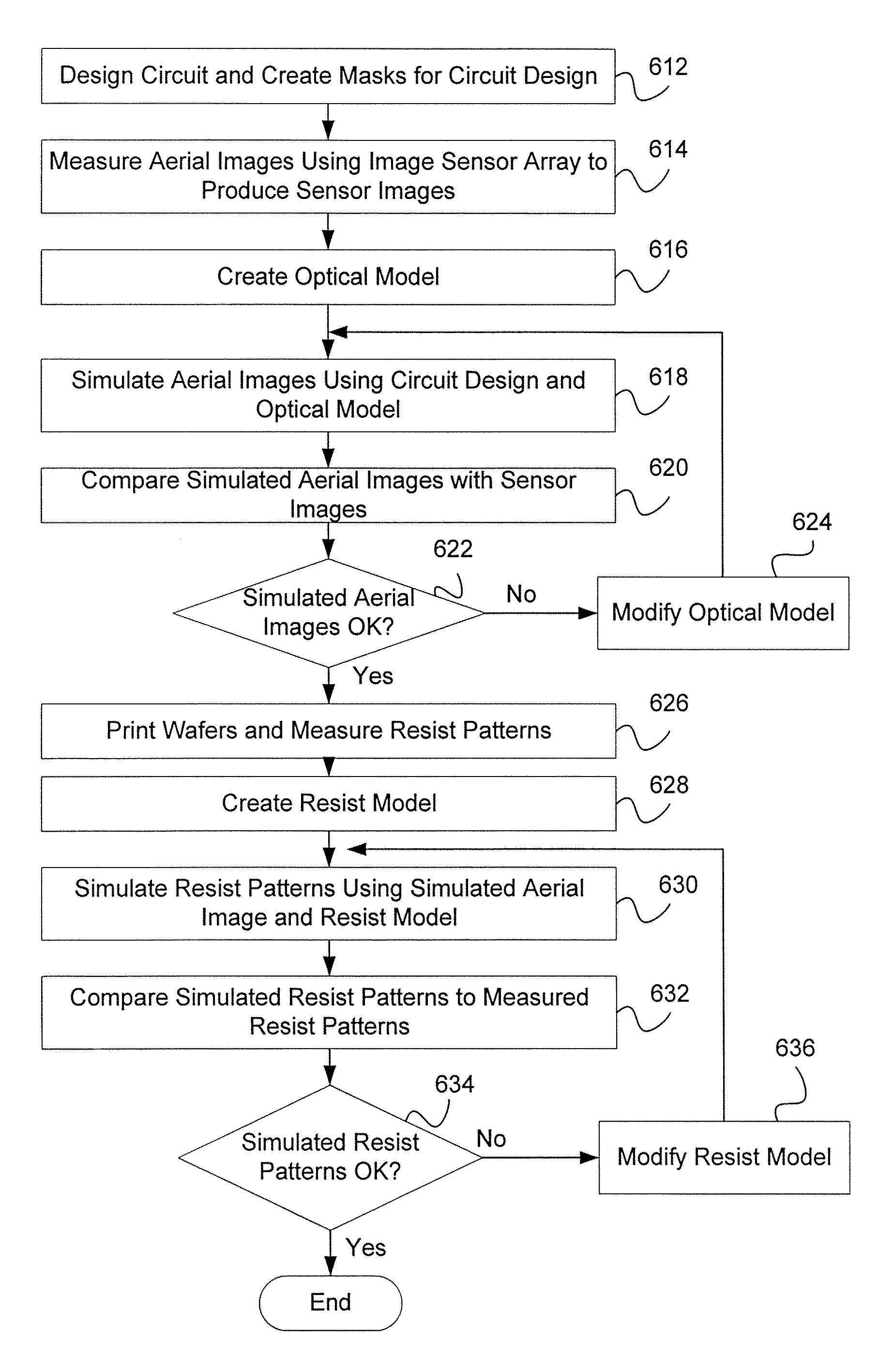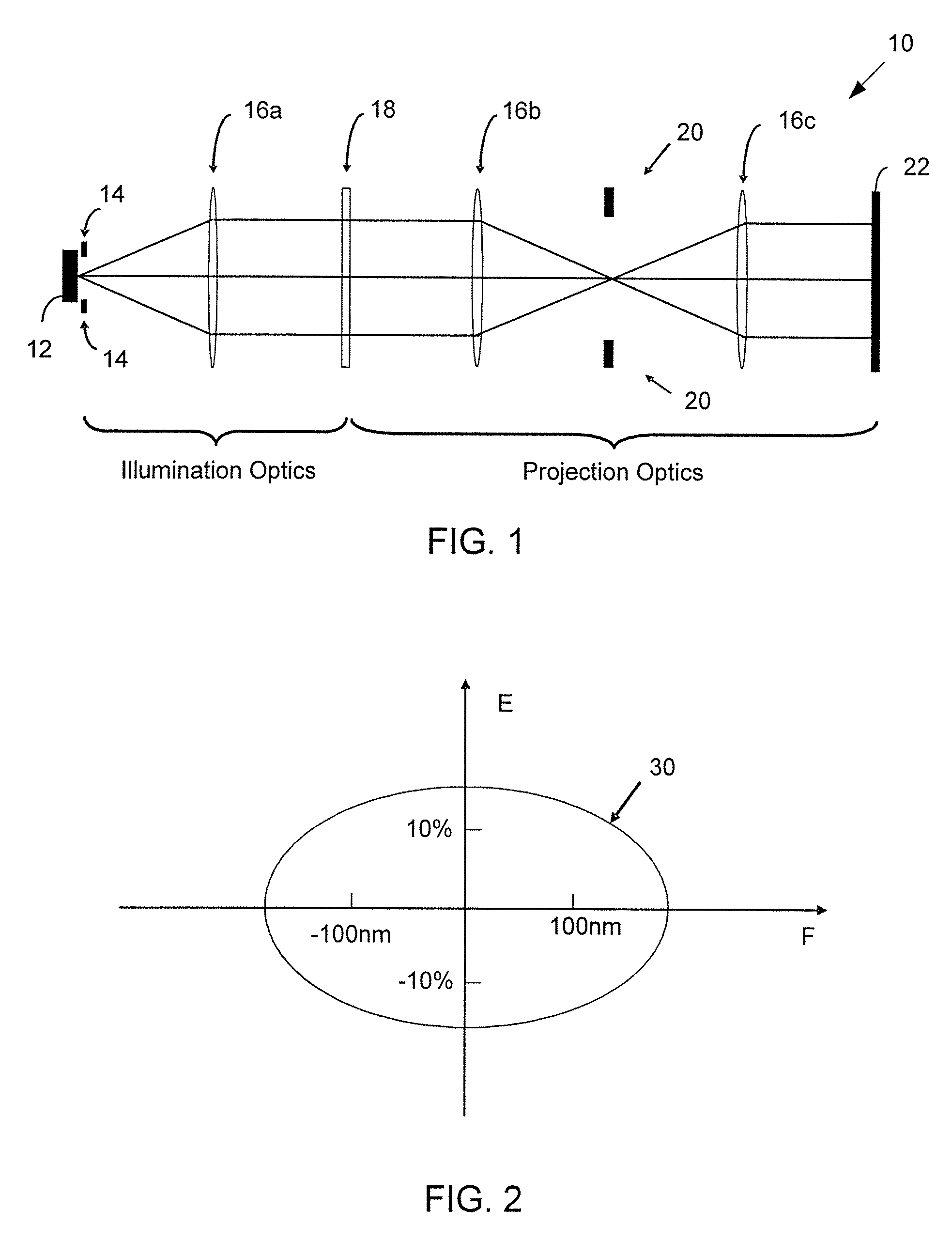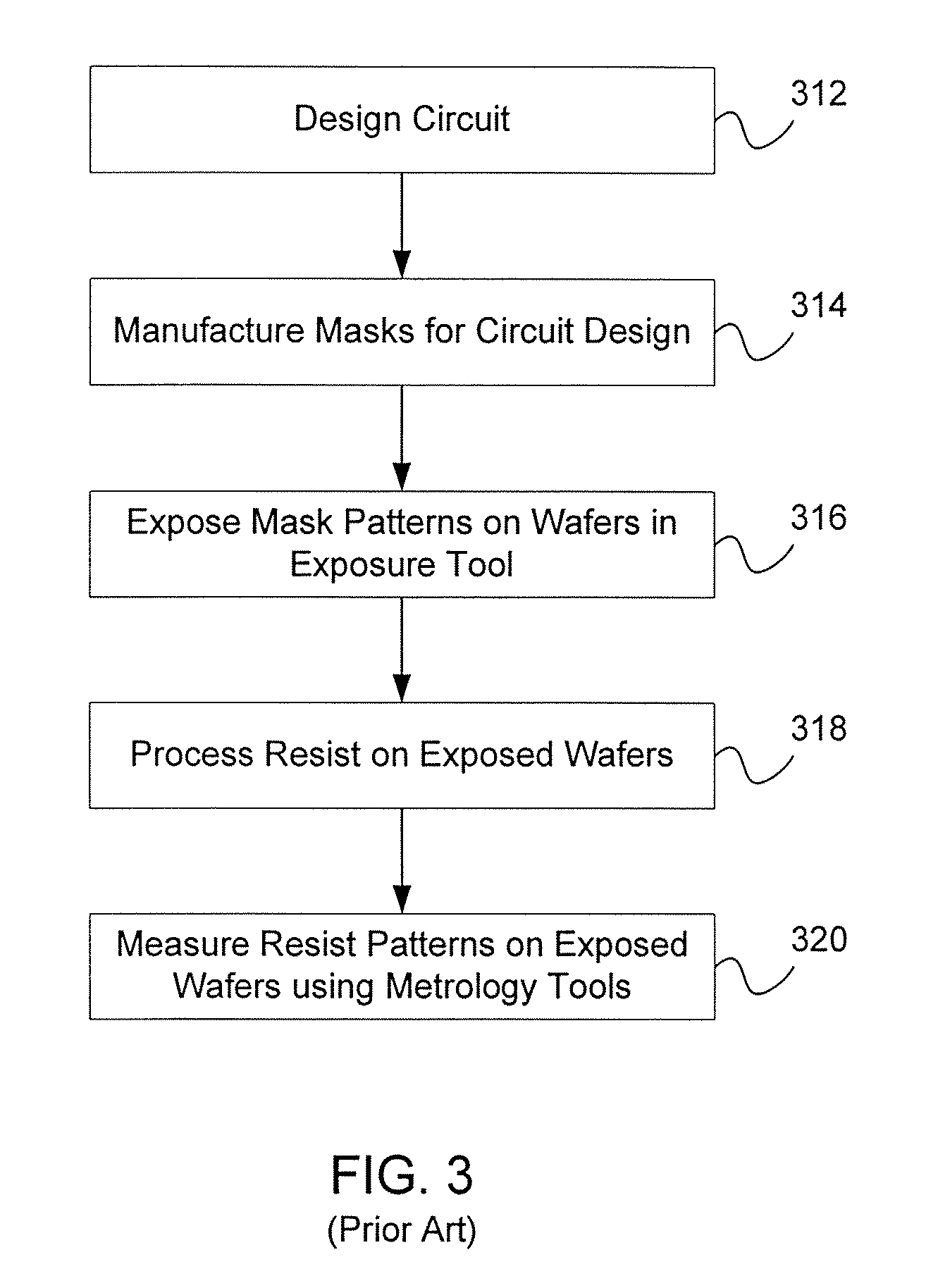Method for lithography model calibration
a lithography and model technology, applied in the field of simulation of lithography processes, can solve the problems of significant light interference and diffraction effects affecting the imaging process, the mask may not be perfect, and the resist tends to undergo complex chemical and physical changes, so as to improve the predictability of the pattern transfer process, improve the calibration of both optical models, and improve the accuracy and separability of optical and resist models
- Summary
- Abstract
- Description
- Claims
- Application Information
AI Technical Summary
Benefits of technology
Problems solved by technology
Method used
Image
Examples
Embodiment Construction
[0039]In one embodiment, the method of the invention for separately calibrating an optical model and a resist model of a lithography process includes measuring in-situ the aerial images formed in an exposure tool, independent of any resist effects. Either the measured aerial images themselves or other metrics derived from the measured aerial images are used to improve the calibration of the optical model that will be used in a simulation of the lithography process. By improving the tuning of the optical model using measured aerial image information, a more accurate representation of the optical model itself is developed, and by separating the optical model and the resist model, a more accurate resist model is developed, leading to truly separable models bearing maximum physical significance to the lithography process.
[0040]Herein, an image of a mask pattern formed by the exposure tool and projected through the air and incident upon a photoresist-coated wafer surface is referred to a...
PUM
 Login to View More
Login to View More Abstract
Description
Claims
Application Information
 Login to View More
Login to View More - R&D
- Intellectual Property
- Life Sciences
- Materials
- Tech Scout
- Unparalleled Data Quality
- Higher Quality Content
- 60% Fewer Hallucinations
Browse by: Latest US Patents, China's latest patents, Technical Efficacy Thesaurus, Application Domain, Technology Topic, Popular Technical Reports.
© 2025 PatSnap. All rights reserved.Legal|Privacy policy|Modern Slavery Act Transparency Statement|Sitemap|About US| Contact US: help@patsnap.com



